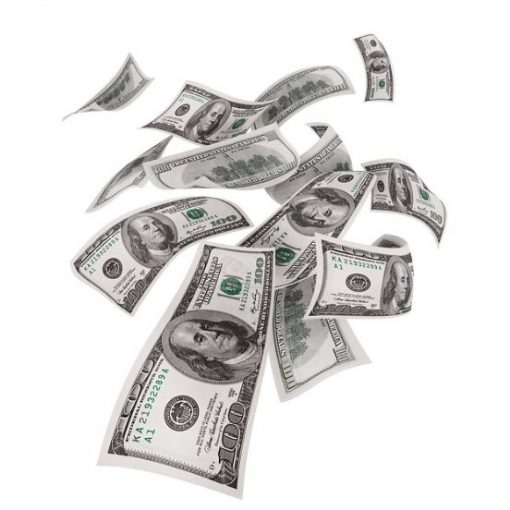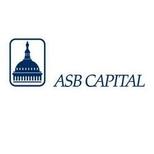It was an interesting first quarter that, except for rising volatility, refused to follow the script. Bonds, which almost all the experts said to throw out on the curb, surprised everyone and beat stocks, despite the S&P 500 Index (SPX) hitting new highs in March.
Meanwhile, gold, given up for dead, rallied hard for the first two months along with most other commodities. It wasn’t supposed to be this way—but then again, it seldom is.
The Seaview Conservative Tactical Macro portfolio turned in solid absolute and relative performance for the first three months of the year as diversification worked to limit losses during market pullbacks while exposure to the right asset classes helped to capture upside performance.
In this month’s letter I thought that I’d delve a bit deeper into the issues affecting China. After all, without China the environment for global growth becomes far more challenging.
The government’s attempt to rebalance the economy will cause an already slowing economy to accelerate to the downside. As the domestic property market collapses, the economy will suffer yet another blow and begin to wobble.
Like a punch-drunk fighter, the economy starts to stagger as reforms rein in the rabid growth in local debt that has fueled much of the investment-led growth. The knockout punch arrives with the advent of China’s first domestic bond defaults that cause lenders to price in escalating credit risk, further aggravating already nervous credit markets and adding to capital flight.
Given the depth of the challenges facing China today, many question whether its leadership has the will to follow through on its planned reforms, which is understandable given repeated often seemingly half-hearted attempts at reform in prior years.
Premier Li Keqiang’s Report on the Work of the Government, delivered in March at the Twelfth National People’s Congress was not only a political tour de force for the reform movement but, in my opinion, an unwavering message that the era of government secrecy and slow progress on reforms is over.
China still essentially remains a centrally controlled economy. The leadership announced that it intends to enact reforms and rebalance the economy by shifting from an investment driven economy (almost 50% of GDP) to a consumption driven one (currently about 35% of GDP).
This also constitutes major change, if not upheaval, for the government bureaucracy charged with implementing the plan—and the biggest threat to a bureaucrat is change! Given the high proportion of the workforce still employed at state-owned enterprises, that same bureaucracy is the biggest threat and impediment to reform.
In my judgment, China’s biggest near-term challenge will be managing the supply of credit. Regardless of all the talk about becoming more free-market oriented with market-determined pricing, China’s decisions ultimately has a political basis. Perpetuation of the leadership cadre and preservation of social order are the paramount goals.
We believe this means China will still be forced to compromise by making more credit available, for the leadership can ill afford the risk to stability by draining too much capital from the system.
This means that the People’s Bank of China (PBoC), the nation’s central bank, will find that it must still be more accommodative in facilitating credit to the large export driven sectors if it hopes to achieve 7.5% GDP growth and maintain social order by not risking too rapid a disruption to employment.
The pace of change is unlikely to be uniform but vary by the situation and conform to what the leadership believes is appropriate. Once growth in consumption and services rise sufficiently, Beijing can proceed with greater alacrity to remove inefficient capacity as it reshapes the investment-driven side of its economy.
Often overlooked is the advantage that China’s closed capital account contributes to managing the burgeoning supply of credit, which is why much of the fear over China instigating another Asian debt crisis (a la 1997) is misplaced.
However, it is also why, in my opinion, one shouldn’t expect China to liberalize capital controls any time soon in spite of any contrary comments or indications by government officials. While China has $3.85 trillion in foreign liabilities (equal to approximately 40% of GDP), the majority of it is illiquid direct foreign investment with limited ability for repatriation due to China’s tight capital controls.
Short term foreign liabilities are approximately $1.15 trillion, which equals only about 12% of GDP. This external debt appears even more manageable when one considers that China has $3.8 trillion in foreign currency reserves available to cover those foreign liabilities.
A few high-profile observers see similarities between the housing bubble that set off the United States’ financial crisis in 2008 and China’s rapidly escalating housing prices. In their view, China’s ultimate financial collapse will be rooted in an unsustainable housing bubble. However, there are several important distinctions overlooked in that argument.
The implosion in the US housing market was driven by excessive household leverage, exacerbated by government policy that encouraged home ownership. Home prices were pushed higher as the enlarged pool of mortgage applicants outstripped supply. Many of these new home buyers utilized no income verification (“liar”) loans with minimal or no initial equity and terms that typically reset after three to five years.
Investment banks eagerly abetted and compounded the problem by repackaging and syndicating loan portfolios that were indiscriminate in credit ratings (all were AAA rated predicated upon the past long-term pattern of behavior by mortgagees) despite the historic downshift in the mortgage qualification process that weakened the pool.
In my judgment, the government had enacted its own brand of financial repression in the housing market with disastrous consequences. Defaults spiraled upward while overbuilding in many localities had a negative spillover effect on the construction market as credit terms tightened and qualified buyers evaporated. It’s taken half a dozen years to clear surplus inventory and although stabilized, the sector has still yet to return to normalized levels.
In China, on the other hand, the home buyer’s investment is simply too big to walk away from. Since 2010, home buyers must make a minimum down payment of 30% with 40%-plus typical for their principal residence (down payment for a second home has been raised to a minimum 70% in some larger cities since last year).
This helped restrain the rise in home prices and slow the pace of home buying until this past year. There are no mortgage loan syndication or liar loans. However, more recently, banks have unofficially relaxed their credit policies to allow some prospective borrowers having difficulty coming up with the higher down payments to let the borrower’s parents take out a loan against their house to help.
So is China destined for a financial meltdown generated by a housing bust similar to what the United States experienced in 2008? Perhaps one day it will, but not now.
Put in perspective, Chinese banks have approximately $1.5 trillion in mortgages carried on their books, far less than the approximately $10.5 trillion mortgage debt issued by US banks when the bubble burst in mid-2008. Unlike the US, China doesn’t yet trade mortgage-backed securities so the derivative risk is nonexistent.
The threshold of pain is therefore much higher for Chinese banks given the disproportionately large down payments required by the government. A recent study conducted last summer by Southwestern University of Finance and Economics in Chengdu determined that if home prices were cut in half only 5% of homeowners would be underwater on their mortgages.
China’s large banks are well capitalized–operating with a 20% reserve requirement and a 65% loan-to-deposit ratio. Admittedly, banks are becoming more creative to enable resource-constrained potential buyers to circumvent credit restrictions in order to gather together the down payment, but the magnitude of aggregate exposure for the banking system still appears manageable at this juncture.
It is imperative that the government create investment opportunities for individuals beyond real estate. The government must provide access to the formal financial sector for private capital and allow deposit rates to rise, which has the added benefit of reducing the allure of shadow banking.
This means an end to the financial repression that China has long practiced, which has enabled it to inexpensively fuel its investment-led growth. As interest rates rise to more efficiently allocate capital and boost household income through higher returns, it is incumbent upon Beijing to ascertain that only economically viable projects are approved with government funding as the nascent private capital market begins to assert itself.
Turning our attention to Europe, the rhetoric and saber rattling over the Ukraine has quieted down but the issue is far from resolved. In my opinion, Putin will likely keep a lower profile near term to defuse the “public” face of the conflict as Russia works behind the scenes to circumvent the Western sanctions imposed against it while simultaneously lobbying diplomatically for rescission of the sanctions.
I have no way of knowing for sure, but I don’t anticipate any escalation of tensions that could lead to a shooting war in Europe—it’s the last thing Europeans desire and individual European country interests in this matter are not as unified as the headlines might have one believe.
Europe also realizes that Russia still holds a strong trump card in its supply of natural gas to the continent, which will take on greater negotiating significance once the heating season approaches.
Deflation is still a real risk facing Europe as headline CPI fell once again in the Eurozone last month to just 0.5%. The Eurozone remains at risk of falling into deflation as most of the southern periphery economy remains stuck in low gear with substantial excess capacity but also partially due to the constraints that still encumber the European Central Bank; chief among them is the lack of authority to print money.
Pressure will continue building for the ECB to implement more accommodative monetary policy. Bond yields continue to sink across Europe with Spanish five year yields actually dropping below US Treasuries in anticipation of the ECB going into action.
However, some marginal help may be on the way after the recent labor agreement for German government workers that grants a 5.1% raise over two years—well above the current inflation rate. I’ve commented numerous times in the past that Germany must accept higher inflation to improve the relative competitive position of the weaker Eurozone countries and help prevent them from slipping into deflation. This new contract provides a pattern that we expect the private sector to follow.
I don’t have a crystal ball, but in my opinion I don’t believe that either the US economy or stock market is in danger of crumbling. The US economy is beginning to get up a head of steam and that may be confirmed in the various economic numbers over the next several months.
I am disappointed that wages are essentially stagnant, which means that household income will lag but also that inflation likely remains under wraps. Those who expect recession will often point to this as the reason for the economy to stall.
Admittedly, it could also be what the bond market has been signaling. If you fall into this latter camp then perhaps you should consider being invested in a yield-oriented conservative portfolio.
Consensus expectations for first quarter earnings of companies in the S&P 500 has declined to just 1.2% versus 6.5% at the start of the year. If this sounds familiar that’s because it’s the same pattern last year as the bar was set low and subsequently easily exceeded.
In my view, it will be no different this time: I my opinion first quarter corporate earnings may increase by 3-4%. I don’t anticipate this presenting any problems for the market, just as it hasn’t for the past two years as negative pre-announcements have steady climbed quarter to quarter.
To the contrary, the market will likely be at greater risk once the negative preannouncements start to decline and positive expectations build. In the meantime, record short interest should help to limit the downside to any near term pullback for the market.
DISCLAIMER: The information in this material is not intended to be personalized financial advice and should not be solely relied on for making financial decisions. Past performance is no guarantee of future results.




